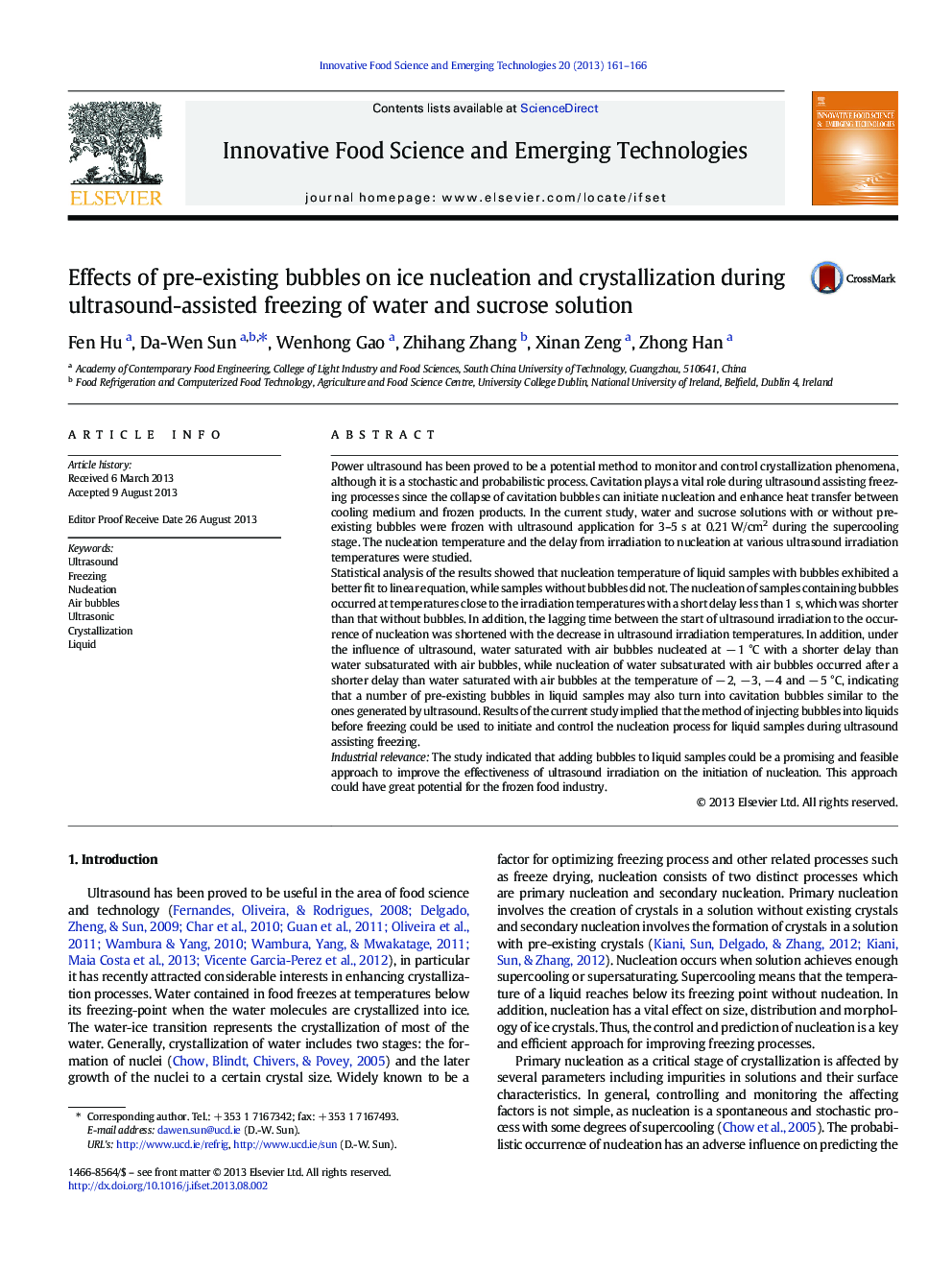| کد مقاله | کد نشریه | سال انتشار | مقاله انگلیسی | نسخه تمام متن |
|---|---|---|---|---|
| 2086585 | 1545546 | 2013 | 6 صفحه PDF | دانلود رایگان |

• We study ultrasound-assisted freezing of liquids.
• Pre-existing bubbles in liquids affect ice nucleation and crystallization.
• Liquids containing pre-existing bubbles nucleate with a shorter delay.
• Pre-existing bubbles are favorable to ultrasound initiating ice nucleation.
• Quantity and sizes of bubbles impact on liquids frozen with ultrasound irradiation
Power ultrasound has been proved to be a potential method to monitor and control crystallization phenomena, although it is a stochastic and probabilistic process. Cavitation plays a vital role during ultrasound assisting freezing processes since the collapse of cavitation bubbles can initiate nucleation and enhance heat transfer between cooling medium and frozen products. In the current study, water and sucrose solutions with or without pre-existing bubbles were frozen with ultrasound application for 3–5 s at 0.21 W/cm2 during the supercooling stage. The nucleation temperature and the delay from irradiation to nucleation at various ultrasound irradiation temperatures were studied.Statistical analysis of the results showed that nucleation temperature of liquid samples with bubbles exhibited a better fit to linear equation, while samples without bubbles did not. The nucleation of samples containing bubbles occurred at temperatures close to the irradiation temperatures with a short delay less than 1 s, which was shorter than that without bubbles. In addition, the lagging time between the start of ultrasound irradiation to the occurrence of nucleation was shortened with the decrease in ultrasound irradiation temperatures. In addition, under the influence of ultrasound, water saturated with air bubbles nucleated at − 1 °C with a shorter delay than water subsaturated with air bubbles, while nucleation of water subsaturated with air bubbles occurred after a shorter delay than water saturated with air bubbles at the temperature of − 2, − 3, − 4 and − 5 °C, indicating that a number of pre-existing bubbles in liquid samples may also turn into cavitation bubbles similar to the ones generated by ultrasound. Results of the current study implied that the method of injecting bubbles into liquids before freezing could be used to initiate and control the nucleation process for liquid samples during ultrasound assisting freezing.Industrial relevanceThe study indicated that adding bubbles to liquid samples could be a promising and feasible approach to improve the effectiveness of ultrasound irradiation on the initiation of nucleation. This approach could have great potential for the frozen food industry.
Journal: Innovative Food Science & Emerging Technologies - Volume 20, October 2013, Pages 161–166